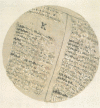Abstract
Posner has suggested that unilateral spatial neglect could be due to a difficulty in disengaging attention from its current focus to orient it toward the neglected half space. Clinical and experimental data suggest, however, that this disengaging difficulty could be only one aspect of a more complex disturbance also characterized by an early automatic orienting of attention toward the half space ipsilateral to the lesion. To test this hypothesis, two different investigations in unselected groups of patients with right and left brain-damage were carried out. The first investigation, to evaluate forms of lateral orienting of attention severe enough to provoke an overt gaze deviation, consisted of the systematic assessment of the phenomenon of "magnetic gaze attraction". The second investigation, to detect milder forms of automatic orienting of attention, analysed the temporal sequence followed in identifying the pictures represented in an "Overlapping Figures task", to see if patients tended to identify first figures lying in the half space ipsilateral to the lesion. In both investigations results consistently showed: a) that patients with right brain damage tend to orient attention automatically toward the ipsilateral half space more than patients with left brain damage; b) that this tendency is tightly linked to the presence of behavioural manifestations of hemi-neglect. These results are therefore consistent with the hypothesis that hemi-neglect is a multi-component syndrome with an early orienting of attention toward the half space ipsilateral to the lesion as the first of these components.
Full text
PDF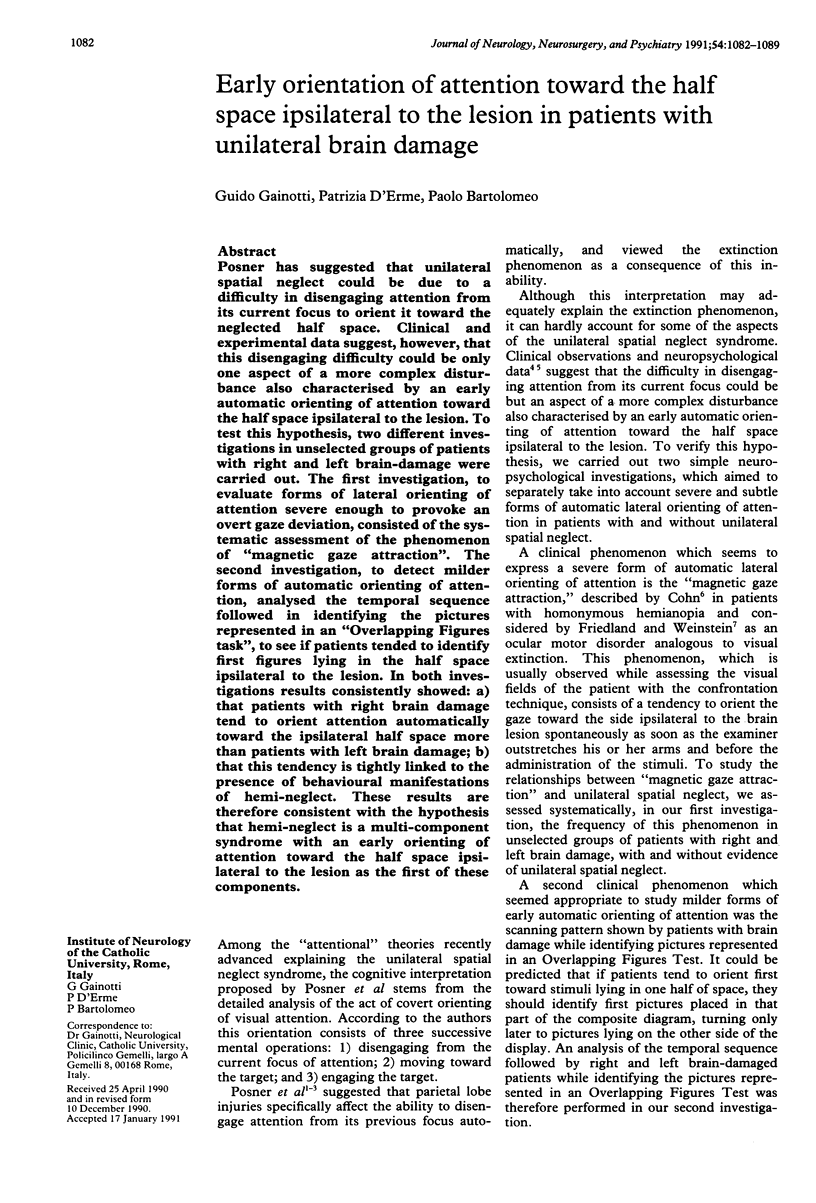

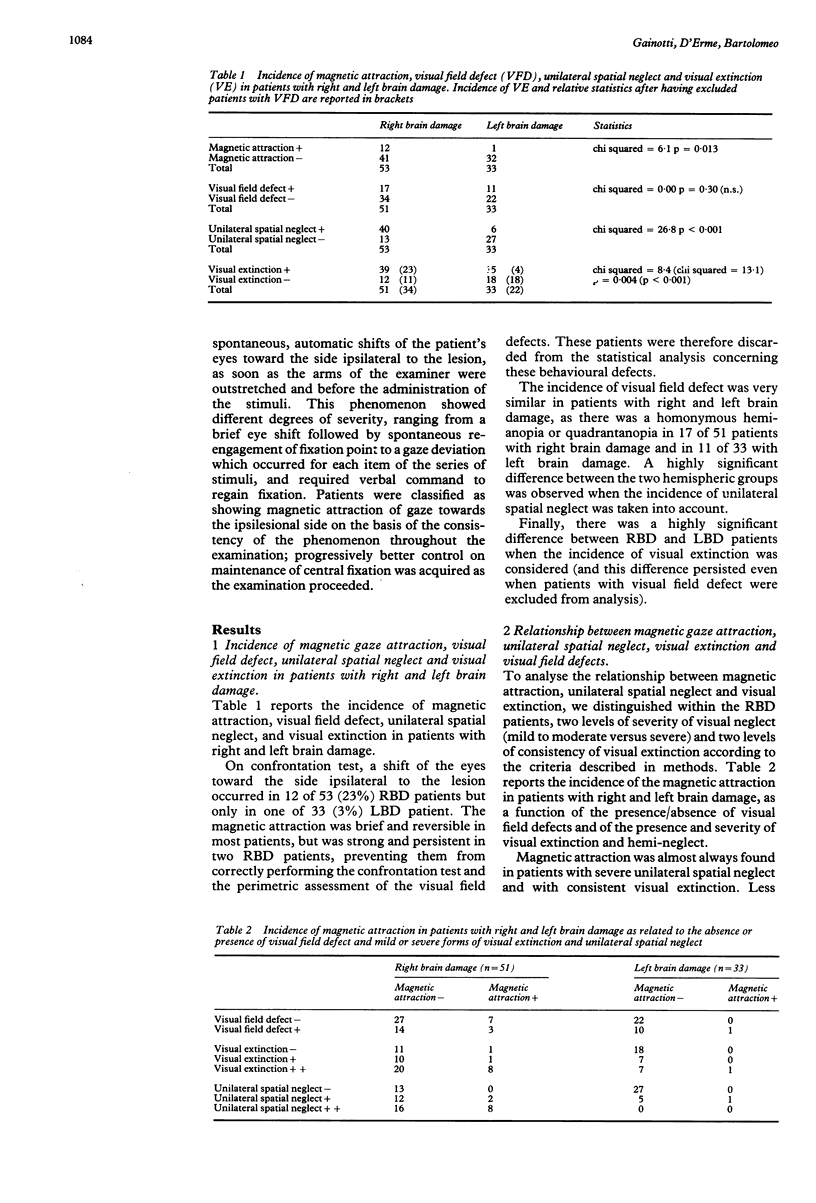

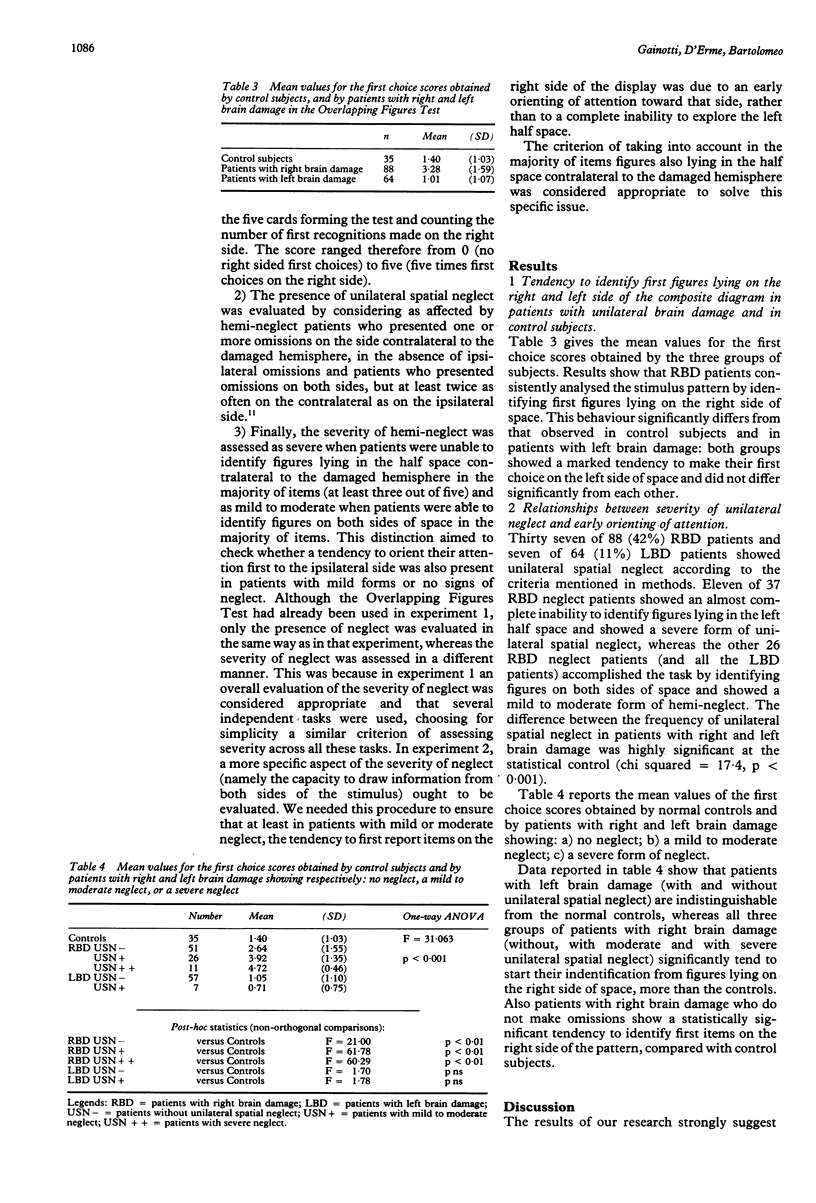
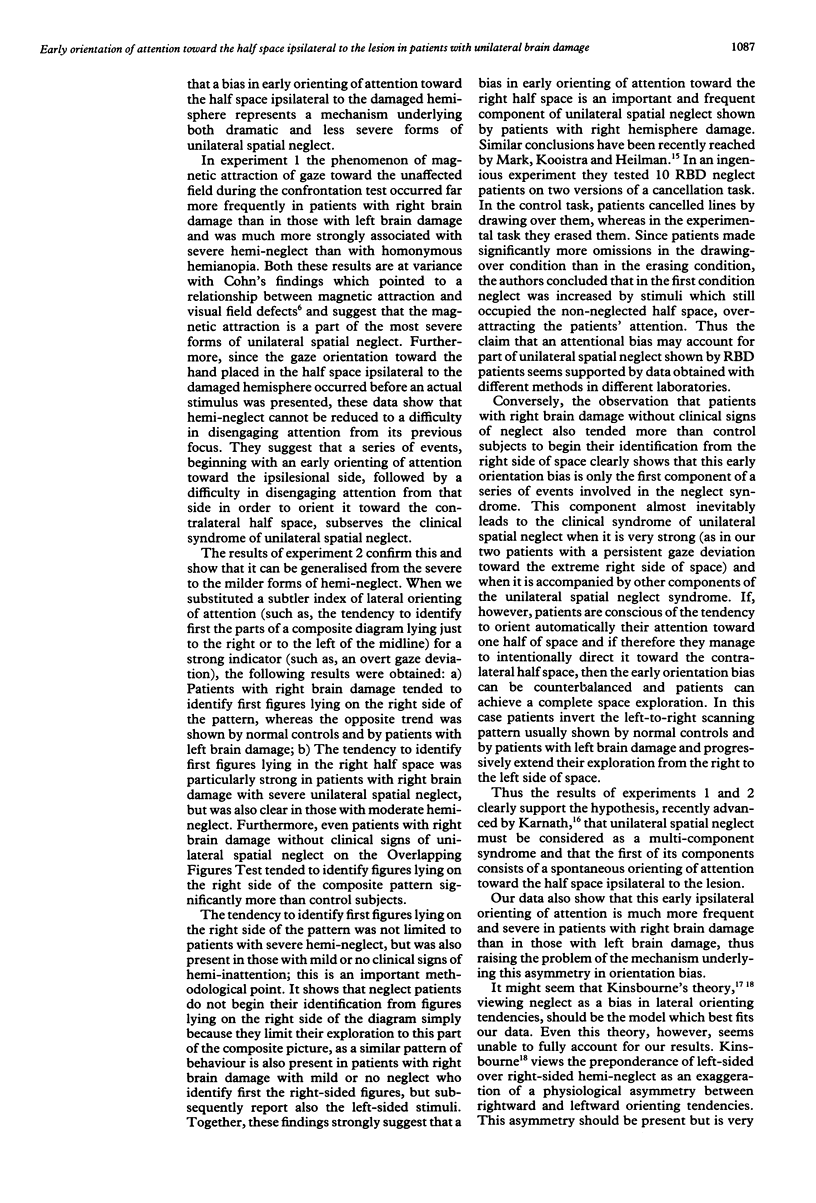
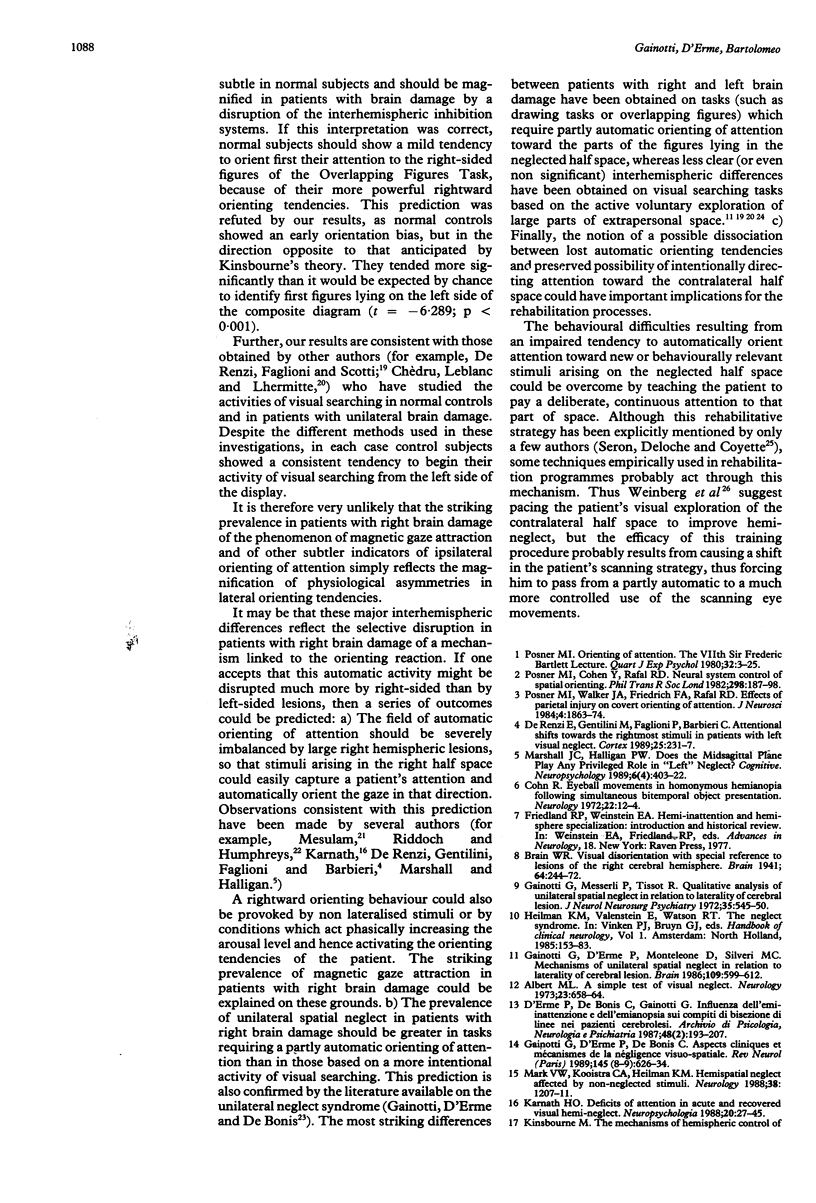
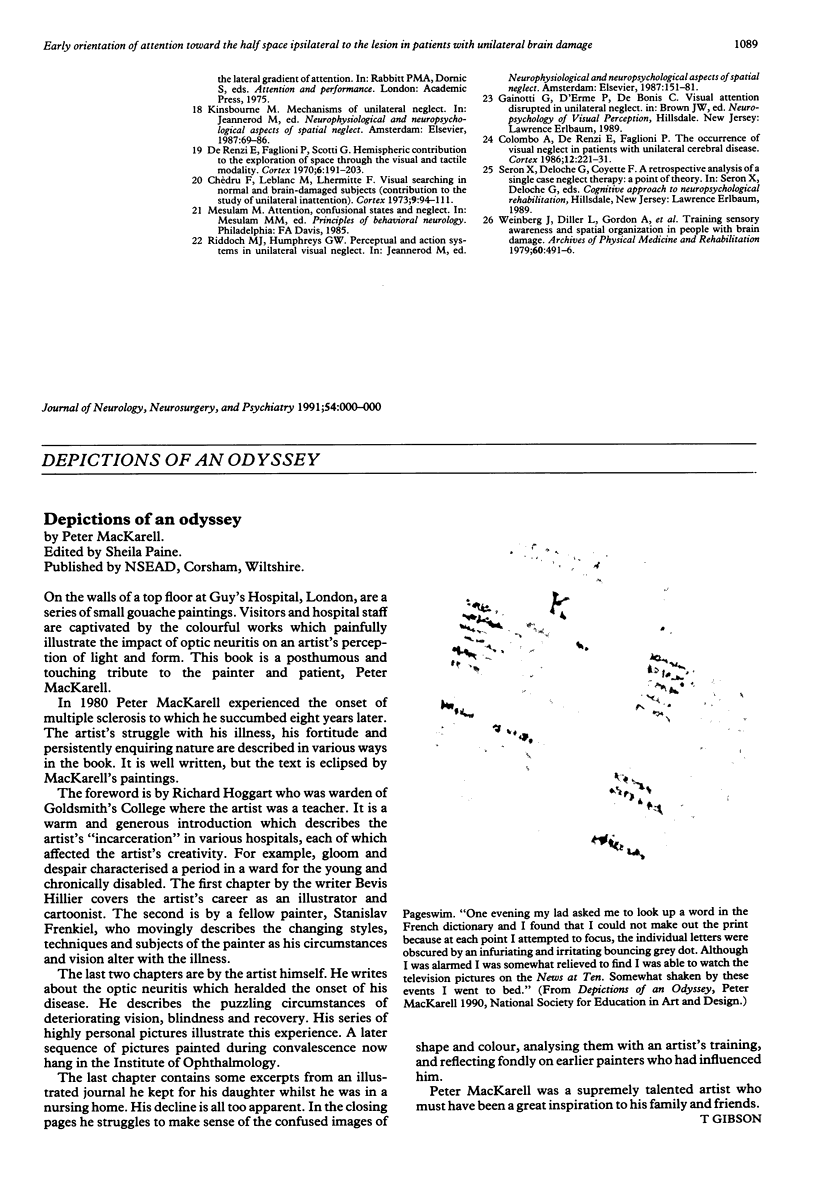
Images in this article
Selected References
These references are in PubMed. This may not be the complete list of references from this article.
- Albert M. L. A simple test of visual neglect. Neurology. 1973 Jun;23(6):658–664. doi: 10.1212/wnl.23.6.658. [DOI] [PubMed] [Google Scholar]
- Chédru F., Leblanc M., Lhermitte F. Visual searching in normal and brain-damaged subjects (contribution to the study of unilateral inattention). Cortex. 1973 Mar;9(1):94–111. doi: 10.1016/s0010-9452(73)80019-x. [DOI] [PubMed] [Google Scholar]
- Cohn R. Eyeball movements in homonymous hemianopia following simultaneous bitemporal object presentation. Neurology. 1972 Jan;22(1):12–14. doi: 10.1212/wnl.22.1.12. [DOI] [PubMed] [Google Scholar]
- Colombo A., De Renzi E., Faglioni P. The occurrence of visual neglect in patients with unilateral cerebral disease. Cortex. 1976 Sep;12(3):221–231. doi: 10.1016/s0010-9452(76)80003-2. [DOI] [PubMed] [Google Scholar]
- De Renzi E., Faglioni P., Scotti G. Hemispheric contribution to exploration of space through the visual and tactile modality. Cortex. 1970 Jun;6(2):191–203. doi: 10.1016/s0010-9452(70)80027-2. [DOI] [PubMed] [Google Scholar]
- De Renzi E., Gentilini M., Faglioni P., Barbieri C. Attentional shift towards the rightmost stimuli in patients with left visual neglect. Cortex. 1989 Jun;25(2):231–237. doi: 10.1016/s0010-9452(89)80039-5. [DOI] [PubMed] [Google Scholar]
- Gainotti G., D'Erme P., Monteleone D., Silveri M. C. Mechanisms of unilateral spatial neglect in relation to laterality of cerebral lesions. Brain. 1986 Aug;109(Pt 4):599–612. doi: 10.1093/brain/109.4.599. [DOI] [PubMed] [Google Scholar]
- Gainotti G., D'Erme P., de Bonis C. Aspects cliniques et mécanismes de la négligence visuo-spatiale. Rev Neurol (Paris) 1989;145(8-9):626–634. [PubMed] [Google Scholar]
- Gainotti G., Messerli P., Tissot R. Qualitative analysis of unilateral spatial neglect in relation to laterality of cerebral lesions. J Neurol Neurosurg Psychiatry. 1972 Aug;35(4):545–550. doi: 10.1136/jnnp.35.4.545. [DOI] [PMC free article] [PubMed] [Google Scholar]
- Karnath H. O. Deficits of attention in acute and recovered visual hemi-neglect. Neuropsychologia. 1988;26(1):27–43. doi: 10.1016/0028-3932(88)90028-0. [DOI] [PubMed] [Google Scholar]
- Mark V. W., Kooistra C. A., Heilman K. M. Hemispatial neglect affected by non-neglected stimuli. Neurology. 1988 Aug;38(8):1207–1211. doi: 10.1212/wnl.38.8.1207. [DOI] [PubMed] [Google Scholar]
- Posner M. I., Cohen Y., Rafal R. D. Neural systems control of spatial orienting. Philos Trans R Soc Lond B Biol Sci. 1982 Jun 25;298(1089):187–198. doi: 10.1098/rstb.1982.0081. [DOI] [PubMed] [Google Scholar]
- Posner M. I. Orienting of attention. Q J Exp Psychol. 1980 Feb;32(1):3–25. doi: 10.1080/00335558008248231. [DOI] [PubMed] [Google Scholar]
- Posner M. I., Walker J. A., Friedrich F. J., Rafal R. D. Effects of parietal injury on covert orienting of attention. J Neurosci. 1984 Jul;4(7):1863–1874. doi: 10.1523/JNEUROSCI.04-07-01863.1984. [DOI] [PMC free article] [PubMed] [Google Scholar]
- Weinberg J., Diller L., Gordon W. A., Gerstman L. J., Lieberman A., Lakin P., Hodges G., Ezrachi O. Training sensory awareness and spatial organization in people with right brain damage. Arch Phys Med Rehabil. 1979 Nov;60(11):491–496. [PubMed] [Google Scholar]



